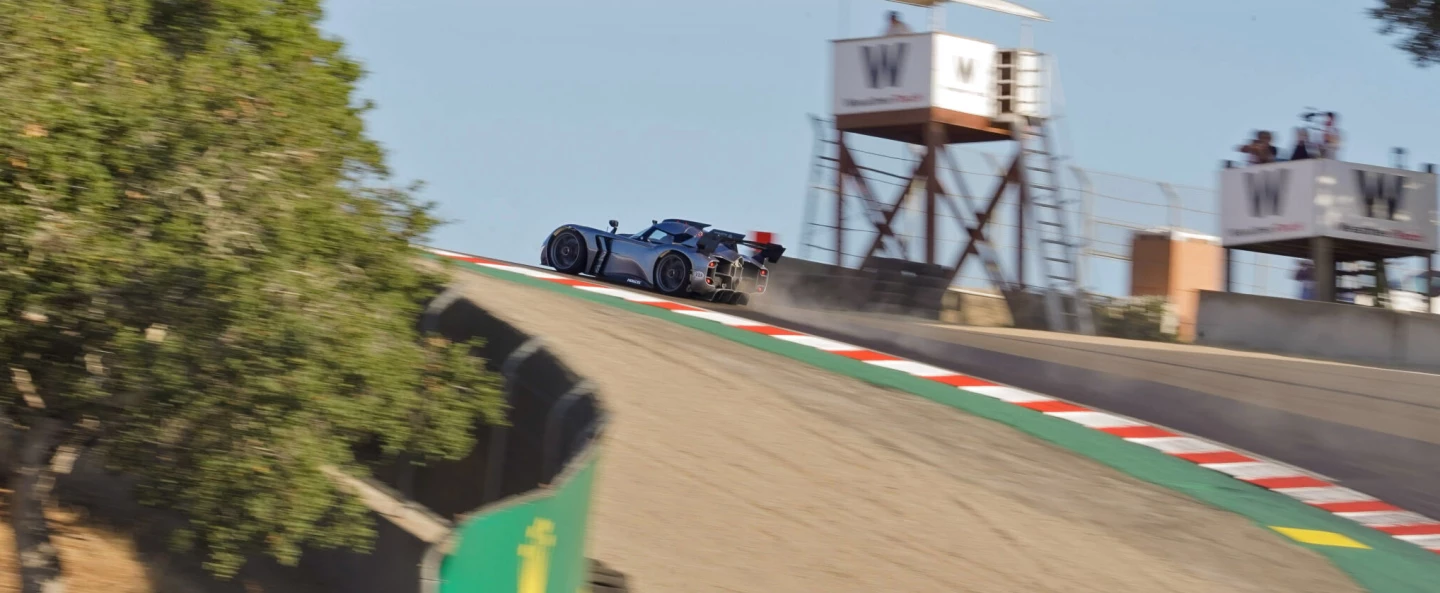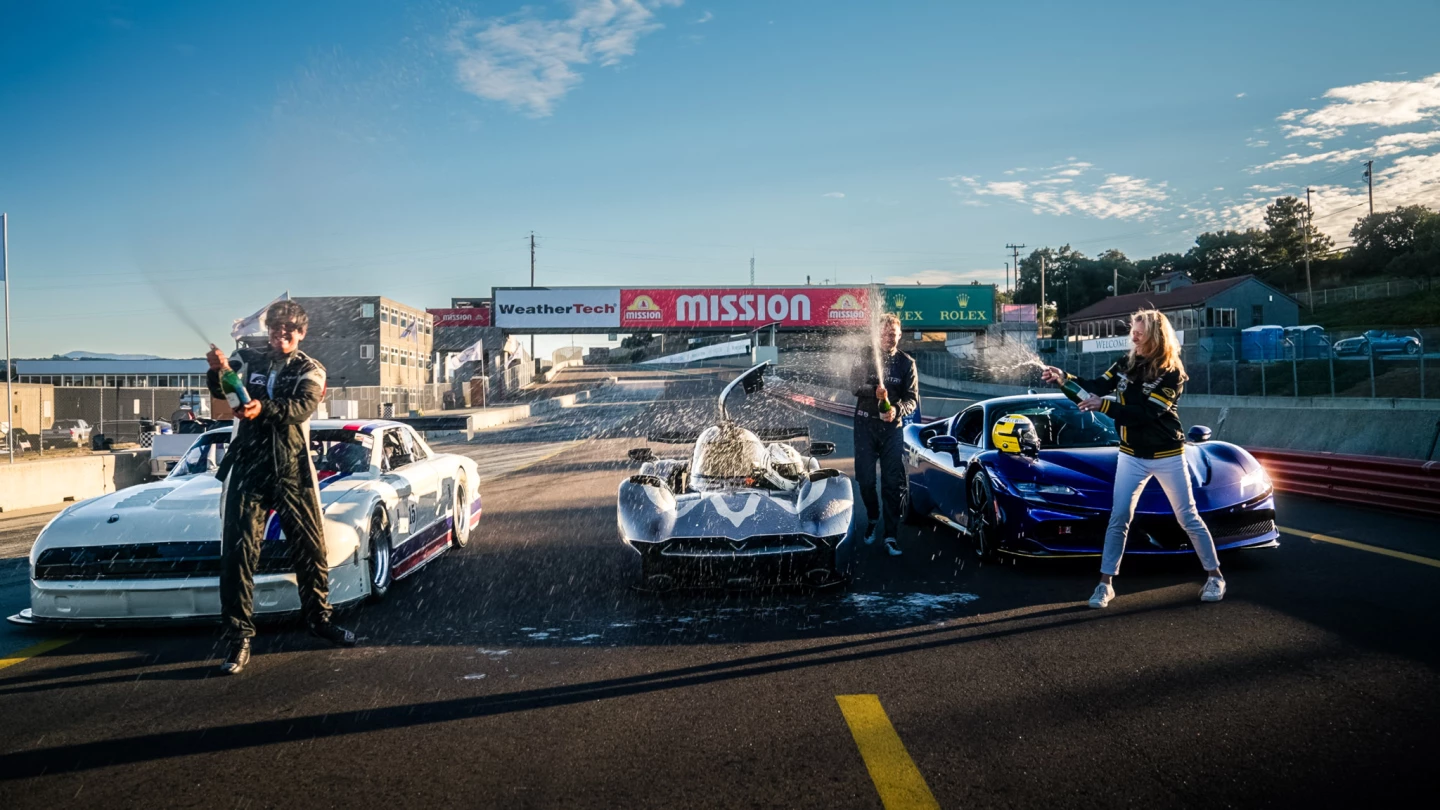McMurtry made its US debut to the crowds at the famed Laguna Seca circuit in Monterey, CA this week, racing the third annual Reverse Corkscrew Hillclimb with Max Chilton back in the pilot seat. The car and driver duo easily set not one, but two records in the process.
Inspired by the Goodwood Festival of Speed – where the McMurtry has dominated the last few years – the Reverse Corkscrew Hillclimb was first held in Aug of 2022. Sixty competitors showed up in cars ranging from a Ford F-150 Lightning electric truck to a 1925 Bugatti Type 35 to a "Doc Hudson" – The famed Hudson Hornet from the Pixar movie Cars, smoking and sliding its way to the top.
This is Laguna Seca's third year of hosting the Reverse Corkscrew Hillclimb.
Starting on the front straight section and racing uphill through turns 11, 10, 9 and cresting over turn 8 – known as the Corkscrew – with the finish line at turn 7, competitors race up 300 feet (91 m) in elevation.

Most of the elevation gain is on the Corkscrew, rising about five and a half stories in only about 450 feet (137 m) of tarmac – something like an 18-degree grade – almost steep enough to rival that of the famous "crooked" Lombard Street in San Francisco.
Legend has it that Skip Barber was bulldozing his way to the top of the now-famous steep hill that the Corkscrew lays atop of when he simply needed to find his way back down. He zig-zagged his bulldozer to the bottom, carving out the soil for asphalt to be paved, and thus the Corkscrew as we know it was born.

Having completed tens of thousands of laps at Laguna Seca in cars and motorcycles, I can attest that going down it at speed the first few times almost feels like you're free-falling in an elevator. I've only ridden a scooter counter-course up the Corkscrew once and had to paddle with my feet to assist the little 50cc 2-stroke in making it up the steep incline.
This year's Reverse Corkscrew Hillclimb was held on August 11th. Oddly enough, as if already knowing the future and only needing to fill in a few blanks in a prewritten press release from McMurtry dated June 19th, the Spéirling fan car absolutely decimated the previous long-layout record, sucking its way up the Corkscrew in 28.6 seconds.
The previous record was set by a 1976 Lotus Type 77 Formula 1 car at 34.69 seconds, six seconds slower than the fan car.
The McMurtry Spéirling Pure fan car also set the record for the newly introduced short course with a 21.958-second run. Second place – a 1967 Ford Falcon purpose-built race car – wasn't even in the same league at a hair over seven seconds slower. Third place, a modern 2022 Ferrari SF90 could only muster a 29.822, nearly eight seconds slower than the Spéirling fan car.

What is a fan car, you say?
I had the same question when I first learned about the record-setting McMurtry Spéirling earlier this year during its record-setting visit to Hockenheim. Those of you who have been around longer than myself, or who perhaps simply have been much more involved in the sport, know that fan cars first came around in the 1970s, particularly when Brabham built the BT46B Formula 1 car with Niki Lauda at the wheel in 1978. It was banished after a single race (that the car won at the Swedish Grand Prix at Anderstorp) due to concerns over its safety.
A fan car uses fans to suck air from underneath the vehicle to create artificial downforce, sucking the car to the ground like a leech giving it more grip, particularly in slower corners where aerodynamics have little to no effect.
While messy with all the debris getting sucked up and blown about the race track (I'd hate to be driving a million-dollar hypercar behind the Spéirling – or any car, for that matter), it sure is pretty dang cool. For a cool US$1.1 million, you could have yourself a 1,000-hp (745-kw) fan car too.
It's going to be hard to beat.
The good stuff starts at 2:52 in the video.










